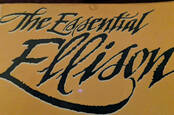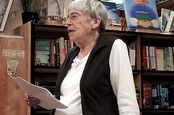This article is more than 1 year old
From Soviet to science fiction icon, the weird life of Isaac Asimov 100 years on
Not perfect, but pretty damn good
Comment As the New Year’s festivities wound down a lot of science and science fiction fans toasted the 100th anniversary of the birth of Isaac Asimov, one of the titans of the profession.
Asimov wrote or edited over 500 books and reams of articles on everything ranging from science, psychology, astronomy, biochemistry (which he taught – on and off – at the Boston University School of Medicine) and, of course, science fiction. Even non-SF fans have probably heard of his widely acclaimed Foundation series of books and his three rules of robotics.
In actual fact the centenary is a bit of a fudge because Asimov never knew his actual birthday and picked January 2 as a likely date, and one that allowed for an extra holiday after the Christmas festivities. He was born around the turn of the year in 1920, three years after the Russian revolution, in the Soviet town of Petrovichi, although he emigrated to the US at the age of three.
Like many Russian Jews the family moved to Brooklyn in New York, and Asimov’s father ended up running a confectionery store and newsagent. Asimov taught himself to read at the age of five and taught his sister too, and consumed the pulp science fiction magazine stocked in his father’s shop.
At the age of 15 he applied to Columbia but was rejected, ostensibly on age grounds but, as he wrote in his autobiography I, Asimov, he recounted that the university had filled its quota of Jews for the year. After multiple rejections he eventually earned his Master of Arts degree in chemistry in 1941 and earned a Doctor of Philosophy degree in chemistry in 1948, serving as a civilian in the US Army in the Second World War.
An academic career beckoned and in 1949 he joined the Boston University School of Medicine as a biochemistry teacher. But by then he had already been getting science fiction short stories published for nearly ten years. In 1950 he wrote his first book and largely abandoned his teaching career, finding writing more lucrative and enjoyable.
The classics
Some of those short stories became the Foundation series, initially a trilogy but later extended to other works. The books, which chart the decline and rise of a galactic empire – aided by the theory of psychohistory – was based around English historian Edward Gibbons’ famous Decline and Fall of the Roman Empire and they proved a massive hit: in 1966 the books won a special Hugo Award for "Best All-Time Series," beating out Tolkien, Edgar Rice Burroughs and Robert Heinlein.
In the 1950s and 60s, with interest in science fiction and pure science spurred by the space race, Asimov became one of the pivotal writers of his generation. He remained friendly with Heinlein but forged a strong friendship with British author Arthur C. Clarke and in the infamous Asimov-Clarke Treaty of Park Avenue, they agreed that Asimov was the greatest science writer and Clarke the greatest science fiction writer. He also had a curious relationship with Harlan Ellison, the pioneer of new wave science fiction, which began with insults and ended up with a firm friendship.
In 1950 he published another book that was to become famous – I, Robot – which was compiled from short stories he published in the previous decade. The stories invented the word robotics – a term Asimov assumed already existed – and also introduced the world to his three laws of robotics:
- A robot may not injure a human being or, through inaction, allow a human being to come to harm.
- A robot must obey the orders given it by human beings except where such orders would conflict with the First Law.
- A robot must protect its own existence as long as such protection does not conflict with the First or Second Laws
Robotics researchers have since adopted these rules, to an extent, although their influence appears to be fading. One wonders what Asimov would have made of the current state of the industry and some of the more lax ethics displayed by some companies and researchers.
Welcome back Isaac
Some thought Asimov had peaked as a science fiction writer by the mid 1960s, as he spent the next few years writing a lot of popular science books, non-fiction and school textbooks. He was even asked by Paul McCartney to write a science fiction musical for his then-band Wings, although the idea was eventually dropped.
But in the 1970s he came back into the SF fold with a series of books and short stories, winning two Hugo and two Nebula awards in the decade. He was also involved in some television and film work, having acted as a consultant on Star Trek in the 1960s.
In 1981 he was approached by a publisher to return to the Foundation series and add more to the canon. Foundation's Edge was published the next year year, to wide acclaim. This was followed by Foundation and Earth in 1986, Prelude to Foundation in 1988, and finally Forward the Foundation, which was published in 1993, one year after Asimov’s death.
He also found time for other roles. Asimov was president of the American Humanist Association and a member and vice president of Mensa International, although he had a rocky relationship with the latter organisation, saying it was too full of people bragging about their IQ scores.
Asimov was a founding member of the Committee for the Scientific Investigation of Claims of the Paranormal, which has done much to expose charlatans claiming extra-sensory powers.
But he was also a man of curious contrasts as a scientific thinker. He loathed flying, only doing it twice in his life, choosing instead to stick to cruise ships and trains. He also never learned to swim or ride a bicycle, although he did eventually learn to drive.
After a series of heart problems Asimov had a triple bypass operation in 1983. Tragically the blood transfusions he received during the operation were contaminated with HIV, and he would later develop full-blown AIDS. He died in his beloved New York on April 6, 1992, but such was the stigma about AIDS at the time his widow waited 10 years to reveal the true cause of his death.
The dark side of Asimov
While undoubtedly one of the finest popular writers of his generation, there was another side to Asimov that would have seen him made persona non-grata at science fiction conventions today.
Asimov married twice. He met his first wife on a blind date in 1942 and married her six months later, but it appears to have been a marriage with serious ups and downs. They had two children together but the marriage fell apart in the mid 1960s and after a separation they parted ways. Two weeks after his divorce came through in 1973 Asimov married noted science fiction writer Janet Jeppson.
After his death, however, people began to recount the scribe's bad behaviour, particularly at conferences, that would definitely not fly in the #metoo era. Asimov was a stalwart of these SF shindigs and was notable (unlike other top authors) for cheerfully signing autographs and answering fans' questions. But there was a darker side, which some would argue (as Harlan Ellison did) was simply the way things were done back then.
To be frank, Asimov was a lecher. A sex pest. He was so renowned for being a buttock grabber that in 1962 he was invited to give a semi-serious talk at the World Science Fiction Convention on “The Positive Power of Posterior Pinching.”
"I have no doubt I could give a stimulating talk that would stiffen the manly fiber of every one in the audience." However, he noted, "I will have to ask the permission of various people who are (or would be) concerned in the matter. If they say 'no', it will be 'no.'"
Famous science fiction writer, and occasional Asimov co-author, Frederick Pohl reportedly recounted that when Asimov was happily married, he was a model of rectitude. But in the late 1960s Asimov went through a period of grabbing the bottoms of women he found attractive – Pohl took the issue up with him.
"When I called him on it once, he said, "It's like the old saying. You get slapped a lot, but you get laid a lot, too," Pohl recounted.
Asimov also, less seriously, wrote a book in 1971 called The Sensuous Dirty Old Man – which was a piss-take on The Sensuous Man and The Sensuous Woman books that were popular at the time. The book was firmly tongue-in-cheek, and is very funny in places – in it Asimov invented the phrase "Sex is dirty, if you do it right." But in these more puritan times it might well have been criticised.
He certainly wasn’t misogynist in his science fiction. Dr Susan Calvin is the lynchpin about which the entire I, Robot series pivots. While the first Foundation series was short on female characters (Bayta Darell – modeled on Asimov's first wife, does stand out however), this was rectified in later books.
Whatever the rights and wrongs of the issue, it cannot be denied that Asimov was a prolific literary artist and created some of the finest works in the science fiction canon and also contributed enormously to educating his readers on everything from physics to bible studies. It's highly unlikely he'd have sided with the Sad Puppy mob, who are trying to "reclaim" science fiction (initially by way of an unsuccessful voting campaign aimed at influencing the Hugo awards) for conservative, straight white males.
This hack remains a fan of his writing though not his sexual assaults. He was a superb writer, a prescient commentator, and one of his most famous quotes is scarily apt in these days of religious fundamentalism, anti-vaxxing and willful ignorance.
"There is a cult of ignorance in the United States, and there has always been," he said.
"The strain of anti-intellectualism has been a constant thread winding its way through our political and cultural life, nurtured by the false notion that democracy means that 'my ignorance is just as good as your knowledge'." ®


